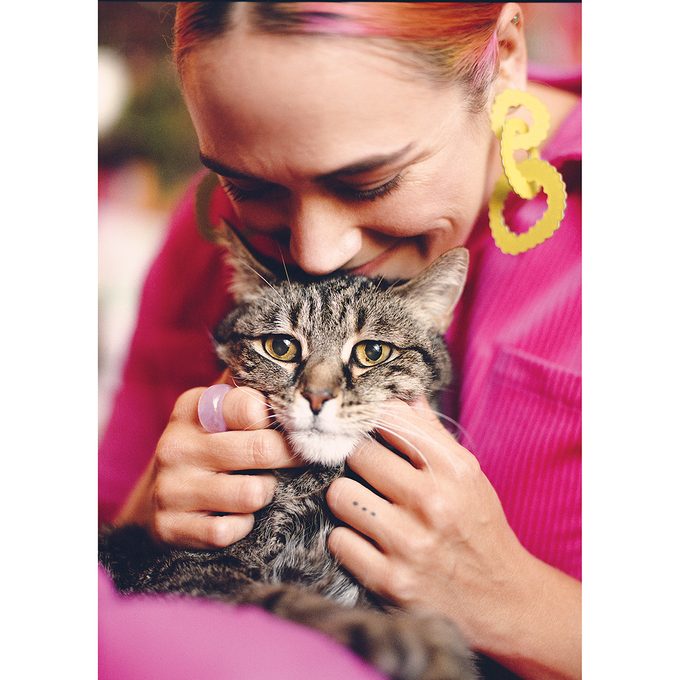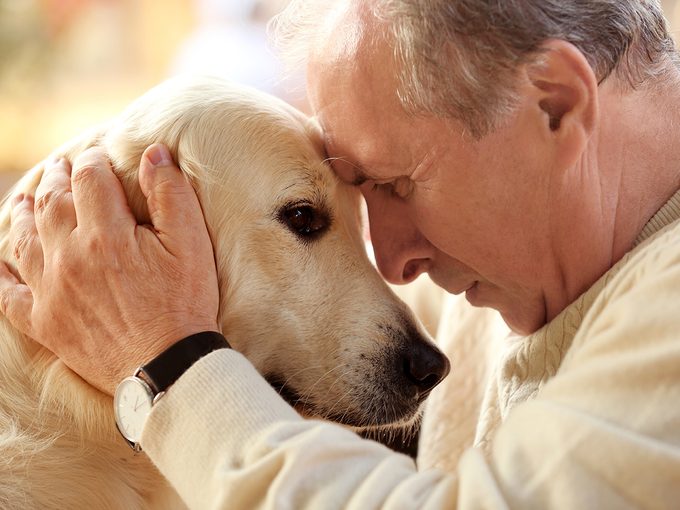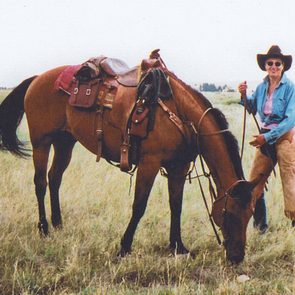How to Provide End-of-Life Care For Your Pet
While it will never be an easy time, there are ways to make it a kinder and more compassionate one—for you and your pet.

My grumpy-but-sweet tabby, Link, has been a part of my life for nearly two decades. I adopted him when I was a lonely and homesick 20-year-old, new to living on my own in Toronto. We have since grown up together. His comforting rumble has helped me through two cross-country moves, one shattering divorce, countless life bumps and bad days, several deaths and one pandemic. He chirps “hello” every morning and warms my feet every night.
I cannot imagine life without him. But at nearly 19, Link long ago surpassed the average lifespan of an indoor cat. He has both arthritis and diabetes, the latter requiring twice daily insulin injections. Already, in the past year, I’ve had several “Is it time?” scares. While he’s pulled through, I dread knowing I’ll have to make the choice to euthanize him soon. I don’t want to say goodbye, but I’d hate it even more if I knew he had suffered.
My struggle is a common one: nearly 60 per cent of Canadian homes have at least one dog or cat. And many people experience intense grief when a pet dies. That grief can be complicated by the guilt of choosing to euthanize. Even if you knew it was the right thing to do, the questions can be haunting: did I wait too long, or not long enough? Were they scared? Was I selfish? You may feel like you should have done more tests, or fewer; tried more accommodations, more medications, or none at all. But while it will never be an easy time, there are ways to make it a kinder and more compassionate one—for you and your pet.

Assess Quality of Life
Sometimes it isn’t obvious to us when a pet’s quality of life begins to decline. Emily Reiner, who runs Forever Loved, a veterinary hospice in the Halifax region, says that it’s important for elderly pets to see the vet at least once a year, and ideally twice. A vet can spot red flags that you can’t and help you decide whether diagnostics are needed or if they’re only likely to make a terminally ill animal more miserable. On the happier side, they may even identify ways to address challenges you thought were unfixable. Say, for example, your elderly dog is sliding all over your hardwood floors—it could be mobility decline, or you may simply need to put down some grippy yoga mats.
A good vet will also evaluate your quality of life: how long can you keep carrying Max up and down the stairs? Can you afford the medication? People have a hard time valuing their own quality of life when it comes to elderly pet care, says Reiner, but even if you want to continue putting your pet’s needs before your own, it’s impossible—and it ultimately isn’t good for your pet or your relationship with them. “Once their joy is gone,” says Reiner. “There’s no payoff.”
It can be a relief to have a trusted expert to consult with. That was the case for one of Reiner’s recent clients, Jesse Shroyer, who made the agonizing decision to euthanize his dog, a Rhodesian Ridgeback named Duckie, last July. Shroyer knew his gentle, pizza-loving pet was slower and stiffer than she once was; he often had to carry her, and sometimes she didn’t want to go outside. But she still enjoyed treats and was affectionate, and he had no idea if it was time. “I needed to hear, ‘Jesse, it’s the right thing,’” he says.
Know Your Bottom Line
Lianna Titcombe is an Ottawa veterinarian and the founder of Claire Place Veterinary Hospice, one of the country’s first practices devoted to end-of-life care for pets. She recommends that people decide, with a clear and unemotional mind, what the “personal bottom line” is for their pet. “It’s better a day too soon than a moment too late,” she says.
Titcombe used the technique to decide when it was time to say goodbye to her own dog, a German Shepherd mix named George. A big, outdoorsy animal, George loved to run the half-kilometre trail on her property. Long before George became sick with a spinal condition that took away his mobility, Titcombe had decided her “bottom line” was the moment George couldn’t walk the trail independently; he would lose too much of what made him George. As soon as he started getting weak, she didn’t hesitate. “I knew,” she says, “and I could let him go.”
Evaluate Your Options
Some people, like Shroyer, can’t bear to think of their pet’s final moments being on an exam table. Many pets experience anxiety at the vet’s office, which can exacerbate guilty feelings. But there are ways to make that last visit better, says Maggie Brown-Bury, a vet who works across clinics in Newfoundland and Labrador. She’s noticed that many people have a hard time being upfront about the reason for their final appointment. But the more honest a client is, the better the clinic can prepare. For instance, they may reserve a quieter, more private room or book the appointment at the end of the day to give the client more time.
Another increasingly popular option is at-home euthanasia. While it can be more expensive, it also allows your pet to pass away snuggled into their favourite cushion or blanket, surrounded by everything—and everyone—they love. It can also provide more closure for their humans. Reiner recalls a client who played the piano as their pet slipped into unconsciousness. Others have specific religious or spiritual ceremonies. Shroyer says it made all the difference to see Duckie die peacefully, at home, and for him to be by her side: “She deserved it.”
Honour Your Grief
Shroyer tells me that, while he knew he’d be sad, the depth and intensity of his grief in the months after Duckie’s death took him by surprise. I’ve had friends who sobbed for weeks after losing their beloved pets. I know I’ll be a wreck when my cat’s time comes—and that’s okay. While it may seem silly to take time off work, or to burst into tears whenever you see someone else with their pup, experts say that it’s normal. In so many ways, the relationship we have with our pets may be our purest and most uncomplicated.
Helen Goldberg is a certified pet loss grief support specialist in Toronto. She says that a lot of her clients beat themselves up for not being able to “get on with life” in a few days. Much of what she does is to give people permission to grieve without shame or judgment. She often suggests writing down the best memories of your pet. If the death was sudden, she may suggest writing a letter to your pet. And if your pet is elderly, like mine, but alive, she suggests keeping a record of the endearing things they do. In all cases, the idea is to remember how much love your pet brought into your life—and how much you gave them in return.
Next, check out expert advice on how to deal with the loss of a loved one.






